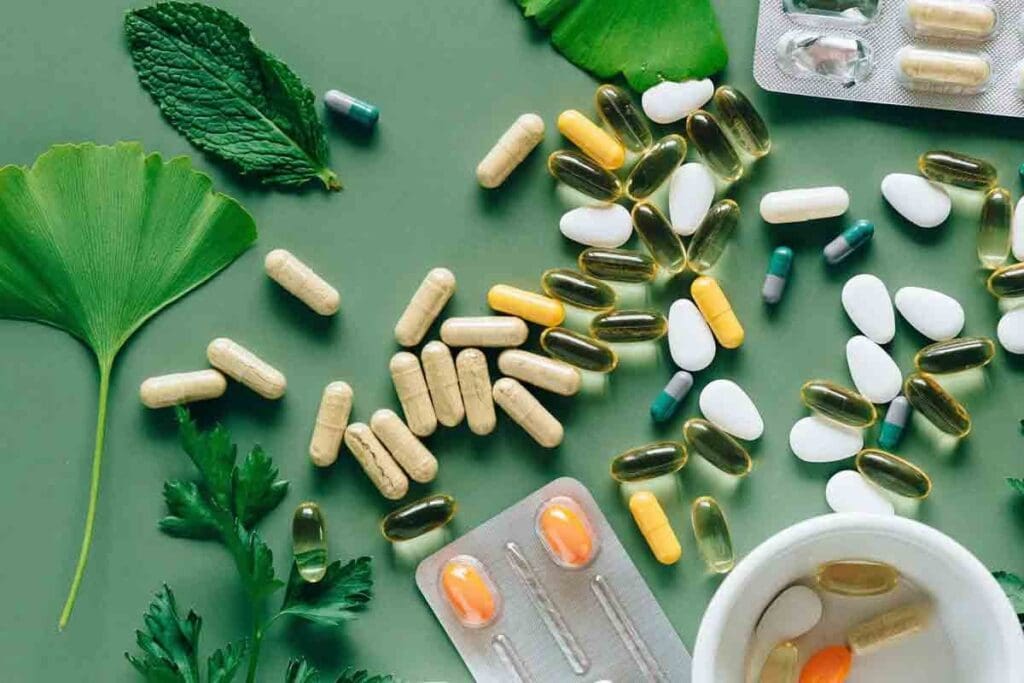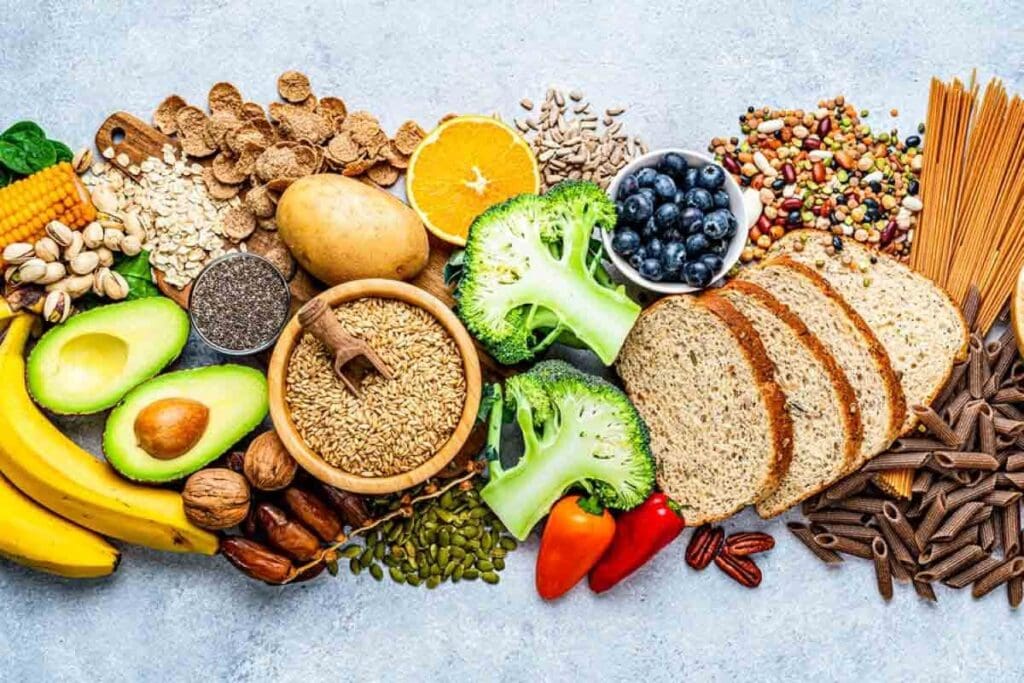Last Updated on November 20, 2025 by Ugurkan Demir

It’s very important to make sure your toddler gets enough iron. Iron helps with growth, brain development, and carrying oxygen in the body. Babies are born with iron, but it runs out over time.
The American Academy of Pediatrics says breastfed babies need iron after 4 months. Adding iron-rich foods or supplements is key. At Liv Hospital, we focus on your child’s needs for the best care.

Iron is key to toddlers’ health and growth. It helps with brain development and gives them the energy they need.
Without enough iron, kids can face serious health issues. This includes problems with learning and behavior. So, knowing how iron helps toddlers is very important for parents and caregivers.
Iron is vital for a toddler’s brain and thinking skills. It helps make hemoglobin, which carries oxygen to the brain. This ensures the brain gets the oxygen it needs to work well.
Iron is also key to a toddler’s physical growth and energy. It’s a part of hemoglobin, which carries oxygen to muscles and tissues. Without enough iron, toddlers might feel tired, weak, and less energetic.
Key benefits of iron for physical growth include:

It’s key for parents to know how much iron their kids need at different ages. Iron helps infants and toddlers grow, think clearly, and have lots of energy.
Iron needs change as kids get older. Newborns get enough iron from breast milk or formula. By 7-12 months, they need 11 mg of iron daily as they start eating solid foods.
Toddlers need 7 mg of iron every day. This is important because they are always on the move and growing. Making sure they get enough iron is key to keeping them healthy.
Iron needs change a lot from birth to age three. At first, babies have enough iron for 4-6 months. Then, they need iron from food or supplements.
Preterm or low birth weight babies need more iron sooner. As they grow, their diet changes, and so do their iron needs. Parents need to keep up with these changes to help their kids stay healthy.
Parents can help by giving their kids foods rich in iron. This includes lean meats, beans, and fortified cereals. They should also know how to help their kids absorb iron better.
Iron deficiency in toddlers is a big deal. It affects their health and brain growth. Iron helps make hemoglobin, which carries oxygen. Without enough iron, toddlers face many health problems.
Studies show iron deficiency is a big issue in the U.S. for toddlers. Some groups are hit harder than others. For example, iron deficiency affects up to 12% of Hispanic toddlers. This shows we need to focus on helping these kids.
| Demographic Group | Prevalence of Iron Deficiency |
| Hispanic Toddlers | 12% |
| Non-Hispanic White Toddlers | 6% |
| Non-Hispanic Black Toddlers | 8% |
These numbers highlight the need to check iron levels in toddlers, mainly in high-risk groups.
Iron deficiency can cause many problems in toddlers. These include:
It’s key to make sure toddlers get enough iron. Parents and caregivers should watch for signs of iron deficiency. If they’re worried, they should talk to a doctor.
Babies need more iron at certain times as they grow. Iron helps make hemoglobin, which carries oxygen. This is key to their health and growth.
Full-term babies are born with enough iron for a few months. The Centers for Disease Control and Prevention says this lasts until 4-6 months. But,preterm babies have less iron because they don’t get as much during pregnancy. So, they might need iron supplements sooner.
Knowing if your baby was full-term or preterm is important. It helps you decide on their diet and if they need supplements.
By 4-6 months, babies need more iron than what they were born with. They need iron-rich foods in their diet. Foods like iron-fortified cereals, pureed meats, and some fruits and veggies are great sources.
Key iron-rich foods for babies include:
For breastfed babies, the American Academy of Pediatrics suggests iron supplements at 4 months. Formula-fed babies get enough iron from iron-fortified formula.
Always talk to your pediatrician about your baby’s iron needs. They can help if you’re worried about iron deficiency or don’t know what foods are best.
Iron is key to your toddler’s health. It’s important to add iron-rich foods to their meals. This helps with growth, brain health, and energy. We’ll look at the best iron sources for toddlers, including animal, plant, and fortified foods.
Animal-based iron is easier for the body to absorb. It’s found in heme iron. Here are some top animal-based iron sources for toddlers:
Plant-based iron isn’t as easily absorbed as animal-based. iron Yet, there are many healthy options for toddlers. Here are some top plant-based iron sources:
Iron-fortified foods are a great way to boost your toddler’s iron intake. They’re perfect if natural sources aren’t enough. Here are some common iron-fortified foods:
Adding these iron-rich foods to your toddler’s diet helps ensure they get enough iron. This is vital for their growth and development.
It’s important to help your toddler get enough iron for their growth. Iron is key to their health. There are ways to make sure they get more iron from their food.
Vitamin C helps your toddler’s body use iron better. Adding foods rich in vitamin C, like oranges and strawberrie,s to meals can help. For example, try oranges with iron-fortified cereal or bell peppers in stir-fries.
Other things can also help iron absorption:
Some foods can block iron absorption. Knowing these can help you plan better. Calcium-rich foods like milk and cheese can lower iron use. It’s best to eat them apart from iron-rich foods.
Other things to watch out for:
Knowing how iron absorption works can help you choose better foods for your toddler. This ensures they get enough iron for their growth.
Iron supplements are key for babies to get enough iron. This is important because iron helps with growth and making hemoglobin. Hemoglobin carries oxygen around the body.
There are different iron supplements for babies. They match various ages and needs. Here are the main types:
The right amount of iron supplements changes with age. Here’s what’s recommended:
| Age Group | Recommended Daily Iron Intake |
| 0-6 months | 0.27 mg (breastfed infants may need supplementation) |
| 7-12 months | 11 mg |
| 1-3 years | 7 mg |
Iron supplements are vital for many babies, but can have side effects. Common issues include:
Talking to a healthcare provider is key. They can help figure out the best iron supplement for your baby. They can also address any side effect worries.
Iron supplements are important for babies, but some need them more than others. This is because some babies are at higher risk of not getting enough iron.
Babies who only drink breast milk get enough iron at first. But their iron levels go down over time. The American Academy of Pediatrics says these babies should start iron supplements at 4 months.
Key considerations for exclusively breastfed babies include:
Premature and low birthweight babies need more iron than full-term babies. They need iron supplements sooner and in higher amounts. This is because they start growing fast and have less iron at birth.
For low birthweight and premature infants:
When to start and stop iron supplements depends on the baby’s needs. Usually, supplements are given until the baby eats foods that have enough iron.
Guidelines for starting and stopping supplementation:
Iron is key for toddlers, and there are tasty ways to add it to their meals. It’s important for their growth, energy, and health.
Start the day with a nutritious, iron-rich breakfast. Here are some ideas:
These breakfasts are not just iron-rich. They also have other nutrients for a healthy start.
For lunch and dinner, try these iron-rich recipes:
| Meal | Iron-Rich Ingredients |
| Grilled chicken with roasted vegetables | Chicken, spinach |
| Beef and broccoli stir-fry | Beef, broccoli |
| Lentil soup with whole-grain bread | Lentils, iron-fortified bread |
These meals are iron-rich and balanced with other nutrients.
Snacks are a good way to add iron to your toddler’s diet. Here are some ideas:
These snacks are easy to make and fun for toddlers to eat.
It’s important to know when to talk to a healthcare provider about iron levels. This is keytor your toddler’s health. Iron deficiency anemia is common in toddlers ,and catching it early is vital.
Iron deficiency anemia shows in different ways. Look out for these signs:
If your toddler shows any of these signs, see a healthcare provider. They can check and suggest what to do next.
To find iron deficiency anemia, a blood test is usually needed. The doctor might also do a physical check and look at the child’s health history. This helps find other possible reasons for the symptoms.
Treatment options could be changing the diet to eat more iron-rich foods or taking supplements. Sometimes, more tests are needed to find why the iron levels are low.
For babies, it’s vital to add iron-rich foods to their meals. Good choices include iron-fortified cereals, pureed meats, and some fruits and veggies. For specific advice on iron-rich foods for babies, talk to a healthcare provider or a nutritionist.
Always follow the doctor’s advice on iron supplements. Regular check-ups are important to keep an eye on the iron levels and adjust the treatment if needed.
It’s key to make sure toddlers get enough iron for their growth. Iron helps their brains grow, supports their physical development, and keeps them full of energy.
Parents can help by feeding their kids foods rich in iron. This includes both animal and plant-based foods and iron-fortified products. Sometimes, an iron supplement is needed, like for babies who only drink breast milk or were born small.
IParents need to knowthe signs of iron deficiency. If they’re worried about their child’s iron levels, they should talk to a doctor. Working with healthcare experts helps ensure kids get the iron they need for healthy growth.
By focusing on iron intake, parents can give their toddlers a strong foundation for life. This supports their health, brain function, and overall well-being for years to come.
For babies, the best iron supplements are drops or liquids. They are easy to give and can mix with breast milk or formula. Brands like Fer-In-Sol and Fer-Iron are popular.
Infants need 0.27 mg of iron daily from birth to 6 months. From 7 to 12 months, they need 11 mg. The American Academy of Pediatrics suggests iron supplements for breastfed babies at 4 months.
Toddlers can eat animal-based foods like red meat, poultry, and fish. They can also have plant-based foods like beans, lentils, and fortified cereals. Try iron-fortified oatmeal, lean beef meatballs, and pureed lentil soup.
Yes, vitamin C helps toddlers absorb iron better. Foods high in vitamin C, like citrus fruits, strawberries, and bell peppers, should be eaten with iron-rich foods.
Signs include pale skin, fatigue, weakness, and shortness of breath. Severe cases can cause developmental delays and affect thinking skills.
Serve iron-fortified cereals, lean meats, and beans. Make meals like chicken and vegetable stir-fries. Also, try iron-fortified toast with avocado.
Yes, milk, coffee, tea, and foods high in phytates can block iron absorption. It’s best to eat these foods separately from iron-rich foods.
No, it’s not recommended to give iron supplements unless a doctor says so. Too much iron can cause stomach problems and toxicity.
Check their diet and talk to a doctor. Regular check-ups and blood tests can show if they’re getting enough iron.
Iron-rich snacks include iron-fortified puffs, dried fruit and nut mixes, and hard-boiled eggs. Try making mini meatballs or iron-fortified energy balls.
The American Academy of Pediatrics suggests iron supplements for breastfed babies at 4 months. But always check with a doctor first.
Yes, you can mix iron supplements with formula or breast milk. Just follow the instructions and talk to a doctor if you’re unsure.
Subscribe to our e-newsletter to stay informed about the latest innovations in the world of health and exclusive offers!